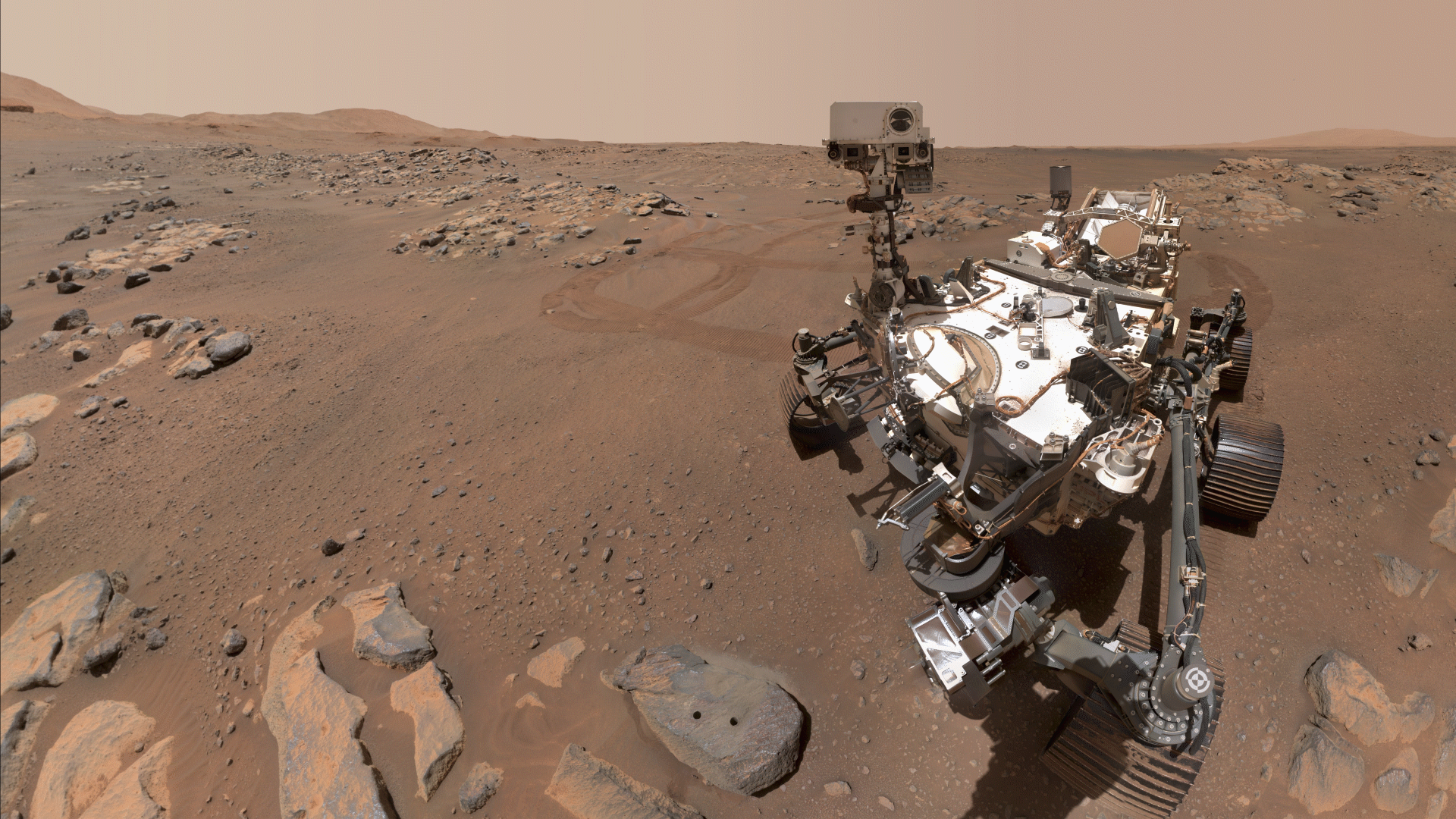How Perseverance rover captured its youngest samples from Mars' Dream Lake (video)
"Comparing rocks from different ages is important because Mars, like Earth, had environments that evolved and changed through time."
A new NASA video has revealed that NASA's Mars rover Perseverance has scooped what may be its youngest rock sample yet from the ancient dry lakebed known as the Jezero Crater.
Jezero has been the figurative stomping ground of the Perseverance rover since the robotic rover landed on the Red Planet on Feb. 21, 2023. As of Nov. 2023, the rover had collected 23 samples of Martian rock that have been sealed in tubes, which scientists hope can be returned to Earth as part of the Mars Sample Return campaign being devised by NASA and the European Space Agency (ESA).
The video introduces viewers to the 21st sample collected by Perseverance called "Pilot Mountain," which the NASA team believes could be the youngest preserved material it has collected yet.
"This is my favorite rock, and the reason it's my favorite rock is because we think it represents some of the youngest preserved material on the Jezero Crater Western Fan," Perseverance Rover geologist and science operator Samantha Gwizd said in the video. "Comparing rocks from different ages is important because Mars, like Earth, had environments that evolved and changed through time. And so, in acquiring one of the youngest samples at Jezero Crater, we'll be able to see how things changed on the planet."
Related: Probing the Red Planet: Finding past life at Jezero Crater

In the NASA video, Perseverance systems operator Steven Sholes explained that even when the rover's Martian exploration campaign was in its planning stages, its operators were keen to pick up some young material to enable them to look back into the Red Planet's geological history.
He also revealed how the region that the rover would make such a collection — Dream Lake — was identified by the Mars Ingenuity helicopter, which arrived at Mars with the rover back in 2021.
Get the Space.com Newsletter
Breaking space news, the latest updates on rocket launches, skywatching events and more!
"We wanted to do that at a place called Fall River Pass. But it turns out Ingenuity, just by happenstance, landed, and it showed very interesting rocks that we hadn't seen yet," Sholes added. "We decided to go and investigate Dream Lake because of the images that we had acquired from the Ingenuity helicopter."
The NASA scientist said that when Perseverance performed an abrasion of the rocks at Dream Lake, removing their upper layers, the team saw something intriguing.
"We saw these great green, glassy grains which were something that we hadn't really seen in these sedimentary rocks before," Sholes continued, "So we really wanted to take a look at this to see whether or not they had carbonates, and this represents some of the youngest material that we are seeing."
Hopefully, samples like this will, when returned to Earth, reveal the geological secrets of Mars, helping to show how it transformed from a world like Earth overflowing with water to the dry and arid landscape that Perseverance explores today.
These samples could also contain traces of ancient microbial life that once existed on Mars (if it did in fact exist) — making their return to Earth a high priority for NASA and scientists across the globe.
Join our Space Forums to keep talking space on the latest missions, night sky and more! And if you have a news tip, correction or comment, let us know at: community@space.com.

Robert Lea is a science journalist in the U.K. whose articles have been published in Physics World, New Scientist, Astronomy Magazine, All About Space, Newsweek and ZME Science. He also writes about science communication for Elsevier and the European Journal of Physics. Rob holds a bachelor of science degree in physics and astronomy from the U.K.’s Open University. Follow him on Twitter @sciencef1rst.
-
thatsallthereis? Good day Mr. Lea,Reply
I noticed that the date of the landing of the Perserverance Rover is quoted in your article as Feb. 21, 2023 which seemed incorrect so I checked it out for myself. A Google search shows that the rover actually landed on Feb. 18, 2021.









